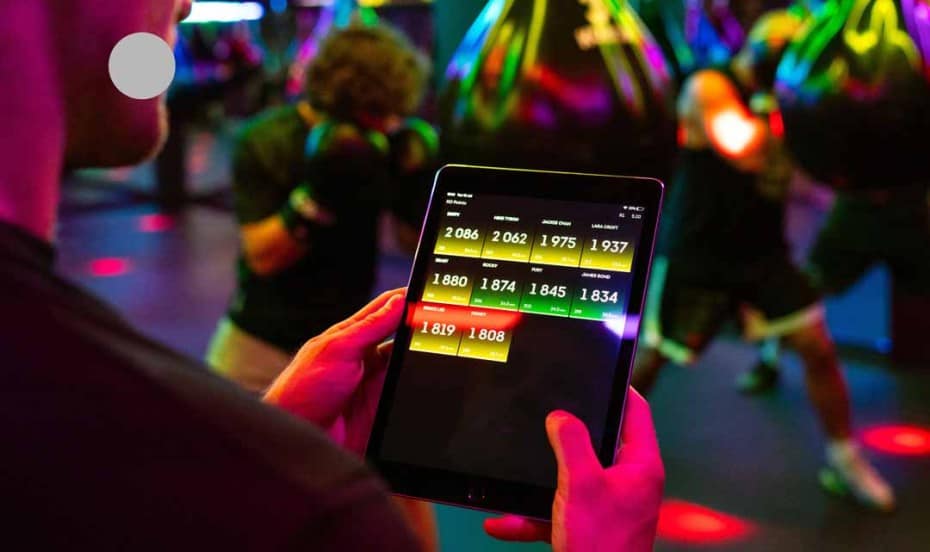Simplified Progress Tracking
How to Track or Not Track to Measure Progress: A Practical Guide
Wondering whether you should track your progress or not? Knowing how to track or not track to measure progress is crucial for reaching your health and fitness goals. This guide will help you decide between detailed tracking methods and intuitive, non-tracking approaches, offering practical tips for both.
Key Takeaways
- Measuring progress through various methods, such as calorie counting and macro tracking, helps maintain realistic expectations and motivates individuals toward their health goals.
- Using non-tracking methods like intuitive eating can promote a healthier relationship with food while still allowing for gradual progress toward wellness objectives.
- Combining tracking and non-tracking approaches provides flexibility and a comprehensive strategy for achieving fitness goals while accommodating individual preferences.
Why Measure Progress?
Measuring progress sets realistic expectations for weight loss or muscle mass gain, preventing disappointment from perceived inadequate results. Understanding rates of fat loss or muscle gain helps individuals stay committed during fluctuations or plateaus. Tracking dietary habits and physical activity provides valuable insights that allow for refining strategies to achieve health goals.
Regularly reviewing both quantitative and qualitative measures of progress fosters motivation and reinforces positive behavior changes. This holistic approach ensures that individuals remain motivated and reduce anxiety during their journey.
Focusing on non-scale indicators can provide a more comprehensive view of progress than tracking weight alone. Overall, measuring progress helps maintain a balanced diet and supports weight management strategies.
Tracking Methods
Various methods are available to track dietary progress, including calorie counting, macro tracking, using a food scale, and measuring cups. Each method offers unique benefits, aiding in monitoring food intake and ensuring adherence to dietary goals.
Choosing the right method helps determine specific macronutrient ratios, measure portion sizes accurately, and maintain a balanced diet. Each method can aid in achieving your health objectives.
Counting Calories
Counting calories is a fundamental method for managing daily calorie intake and daily calories, helping individuals stick to their eating plans and achieve weight loss goals. Various online calculators or apps estimate caloric intake by considering factors like age, weight, height, and activity levels. This ensures you consume the right number of calories for your health goals.
Food diaries or mobile apps efficiently record calorie intake, enabling precise tracking of food intake and progress. These tools offer a comprehensive view of daily calorie consumption, facilitating necessary adjustments. Consistently counting calories helps maintain a balanced diet and support weight management strategies.
Incorporating portion control is also essential when counting calories. A food scale and measuring cups ensure accurate food measurements, preventing overeating and aiding in weight loss. Knowing meal calorie content allows for better planning and adherence to your diet. Overall, calorie counting is a powerful tool in achieving and maintaining a healthy weight.
Counting Macros
Macronutrients, including proteins, fats, and carbohydrates, are essential for various bodily functions. Counting macros involves determining the right macronutrient ratio based on your dietary fats and adjusting them as needed through experimentation, including the macro ratio. This method allows for a more tailored approach to nutrition, ensuring that you meet your specific health objectives.
Utilizing apps like MyFitnessPal and Cronometer can streamline the macro counting process, making it easier to record and track your intake. Effective tracking involves recording macros at each meal, planning meals in advance, and adjusting based on results. By focusing on the three macronutrients, you can create a balanced diet that supports your overall health and fitness goals.
Using a Food Scale
Using a food scale ensures accurate measuring of portion sizes, which is critical for monitoring dietary habits and achieving health goals. Weighing food provides precise control over intake, aiding in maintaining a balanced diet and meeting dietary targets.
Accurately tracking food intake enhances diet plan effectiveness. A food scale ensures precise measurements, avoiding guesswork that can lead to overeating or undereating.
Incorporating a food scale into your routine helps manage portions better and stay on track with health objectives.
Measuring Cups and Visual Cues
Measuring cups are a simple yet effective tool for portion control. Measuring cups help manage food quantities without weighing everything, simplifying adherence to your diet. This method is particularly useful for those who prefer not to track every detail meticulously.
Visual cues from measuring cups effectively control portion sizes. For example, using common household items like teacups or containers can help gauge portions when measuring cups aren’t available. This approach helps maintain balance in your diet and supports your weight management goals.
Non-Tracking Methods
Non-tracking methods offer an alternative for those who prefer not to track every detail of their diet. These methods allow individuals to measure progress without the stress of meticulous tracking. Non-tracking methods allow you to assess progress and develop sustainable habits for long-term success.
Let’s explore one of the most popular non-tracking methods: intuitive eating.
Intuitive Eating
Intuitive eating emphasizes recognizing and responding to bodily hunger signals rather than following strict dietary rules. This approach allows you to eat based on your body’s needs, promoting a healthier relationship with food. Integrating intuitive eating with macro tracking can help you better respond to your body’s hunger and fullness cues.
Disregarding hunger signals can lead to unhealthy eating patterns, especially when focusing solely on macro targets. Embracing intuitive eating improves overall health and well-being. This method encourages a balanced and mindful approach to eating, helping you achieve your health goals without the stress of constant tracking.
Practical Tips for Progress:
Achieving progress doesn’t always require meticulous tracking. Portion control, regular weigh-ins, and measurements help you stay on track. Following these tips helps manage food intake and monitor progress effectively.
Portion Control
Portion control is crucial for managing food intake and supporting weight loss. It involves managing portions without needing to eat tiny amounts or measure everything precisely. Using smaller plates can help prevent overloading and make smaller portions seem more satisfying.
Visual cues, such as comparing a serving of fruit to the size of a tennis ball, can help estimate portion sizes. Additionally, waiting 20 minutes after eating before considering a second helping can help gauge fullness and prevent overeating.
Retraining your brain to accept smaller portions enhances diet management and helps you eat fewer calories.
Regular Weigh-Ins and Measurements
Regular weigh-ins provide feedback to monitor progress without rigid daily tracking, helping you stay on track with health goals and offering valuable insights.
Combining Methods for Best Results
Combining tracking and non-tracking methods creates a balanced and comprehensive strategy for achieving fitness goals. This approach allows for flexibility in your diet while still monitoring important metrics.
Combining methods tailors your approach to suit preferences and achieve the best results.
Adjusting Your Approach
Adjusting your approach based on individual preferences can lead to greater adherence and long-term success. If progress stalls, reduce total calorie intake by 5-8% to encourage continued weight loss and help you lose weight. Prioritize meeting protein goals each day and aim for consistency over perfection.
Common Challenges and Solutions
Consistency is a primary challenge in tracking progress, affecting adherence to dietary goals. Overcome this by assessing factors like sleep quality and stress levels. If a diet is too strict, increasing calories can prevent binge-eating cycles and enhance adherence.
Misestimating portion sizes can lead to overeating or under eating, hindering weight goals. Tracking high-calorie beverages and focusing on food quality prevents accuracy issues. Incorporating personal food preferences during macro tracking enhances satisfaction and adherence.
Elevating Your Exercise Experience
Creating an enjoyable environment significantly increases the likelihood of sticking with exercise routines. Incorporating social aspects into workouts enhances motivation and fosters a sense of community. Connecting class movements to daily activities enhances beginners’ perception of exercise value.
Sharing positive experiences on social media reinforces commitment to fitness and inspires others. Celebrating exercise milestones strengthens the emotional connection to the activity.
Personalized experiences for newcomers reduce anxiety and build a supportive atmosphere essential for adherence to exercise programs.
Progressive Overload Strategies:
Progressive overload is a key strategy for muscle hypertrophy. Amplify tension or weight to challenge your muscles. Gradually increase barbell or dumbbell weights by 2.5-5 lb increments. Increase reps per set to intensify training.
Add extra sets to each exercise for heightened stimulation. Broaden your exercise repertoire by introducing new movements. Enhance training frequency by targeting specific muscle groups twice weekly.
Reduce rest intervals between sets to 60-90 seconds for greater demand. Deepen your range of motion and manipulate time under tension for better results.
Did You Know?
Did you know that fats contain a potent 9 calories per gram, while carbs and protein offer 4 calories per gram? A mere 15 grams (1 tbsp) of olive oil packs 135 calories, while the same quantity of honey delivers just 60 calories—fewer calories than half the energy! If you’re curious about how many calories are in different foods, it’s essential to check the nutritional information.
Understanding these differences can help you make informed choices about your diet.
Summary
In summary, measuring progress in your health journey is essential to achieving your goals. Whether you choose to track calories and macros meticulously or prefer a more intuitive approach, the key is to find a method that works for you. Practical tips like portion control and regular weigh-ins can help you stay on track without the stress of constant tracking.
Remember, the journey to better health is a marathon, not a sprint. Stay consistent, be patient, and adjust your approach as needed. By combining different methods and strategies, you can create a balanced and sustainable plan that supports your long-term health and fitness goals.
Frequently Asked Questions
Why is measuring progress important in a health journey?
Measuring progress is crucial as it sets realistic expectations and prevents disappointment, while also offering insights to refine strategies for achieving health goals effectively.
What are some common methods for tracking dietary progress?
Tracking dietary progress can effectively be achieved through methods like counting calories, tracking macronutrients, and utilizing food scales or measuring cups. These techniques provide valuable insights into your food intake and help you maintain a balanced diet.
How can intuitive eating help in achieving health goals?
Intuitive eating fosters a healthier relationship with food by encouraging individuals to listen to their body’s hunger signals, ultimately helping them achieve their health goals more sustainably. This approach leads to improved physical and emotional well-being.
What practical tips can help in managing food intake without meticulous tracking?
To manage food intake effectively without meticulous tracking, focus on portion control by using smaller plates, and allow 20 minutes before deciding on a second helping. Regular weigh-ins can also help maintain awareness of your food choices.
How can progressive overload strategies enhance muscle hypertrophy?
Progressive overload strategies enhance muscle hypertrophy by consistently challenging muscles through gradual increases in weight, repetitions, and intensity, stimulating growth and adaptation. This approach ensures continual improvement and prevents plateaus.

